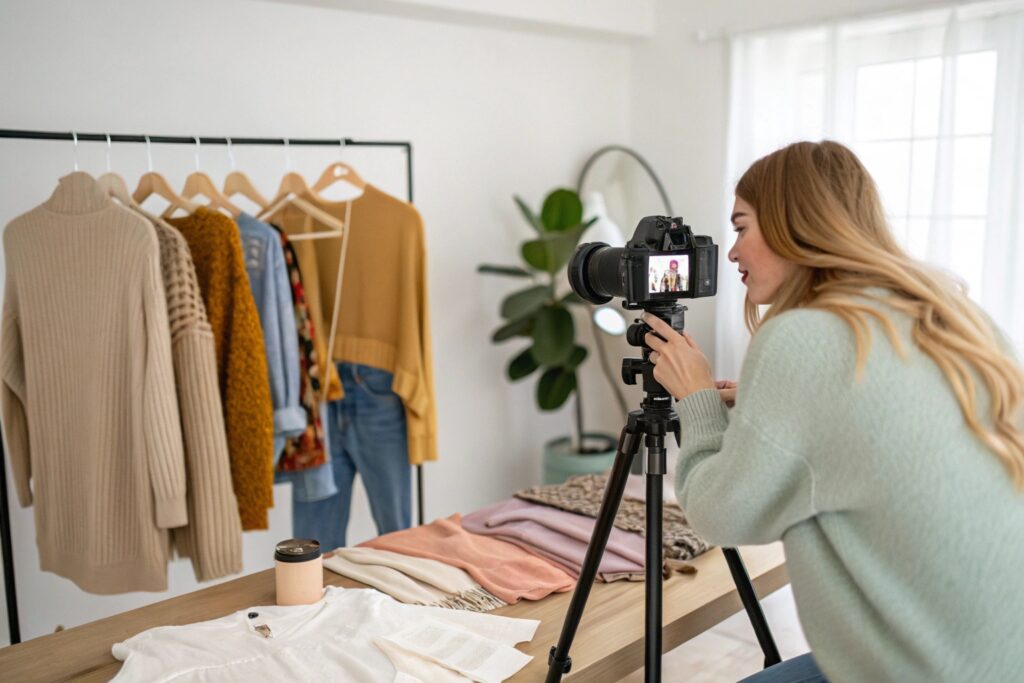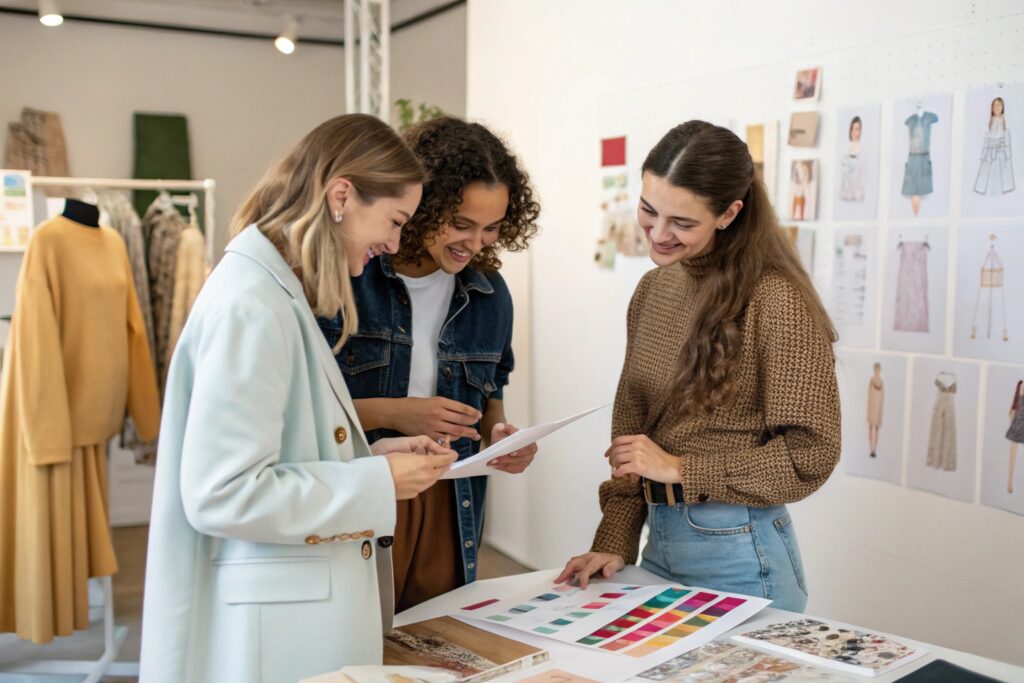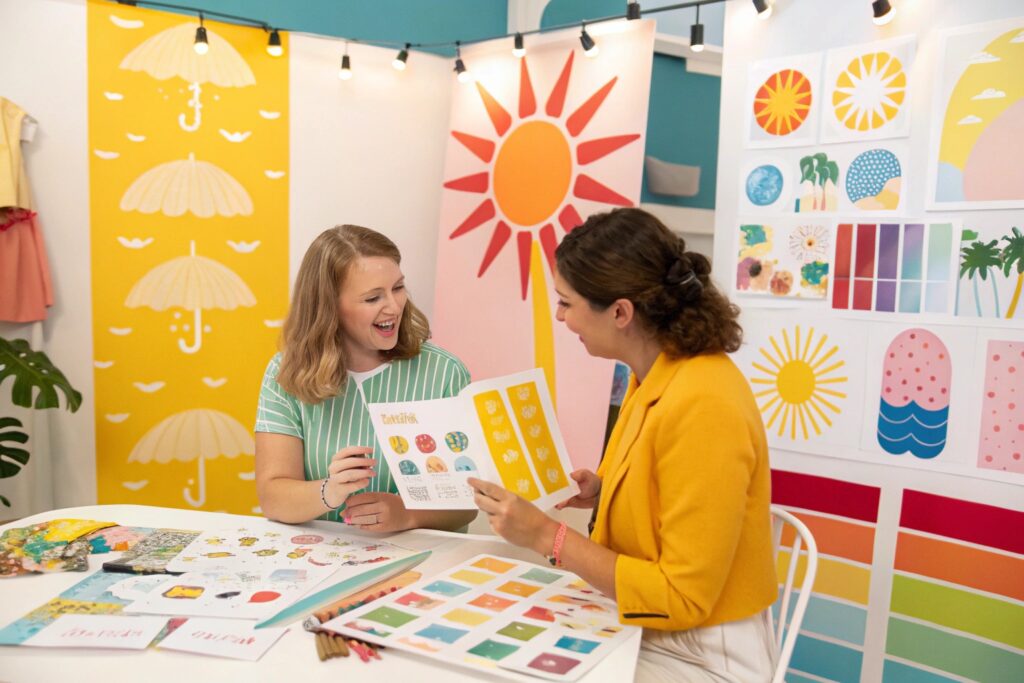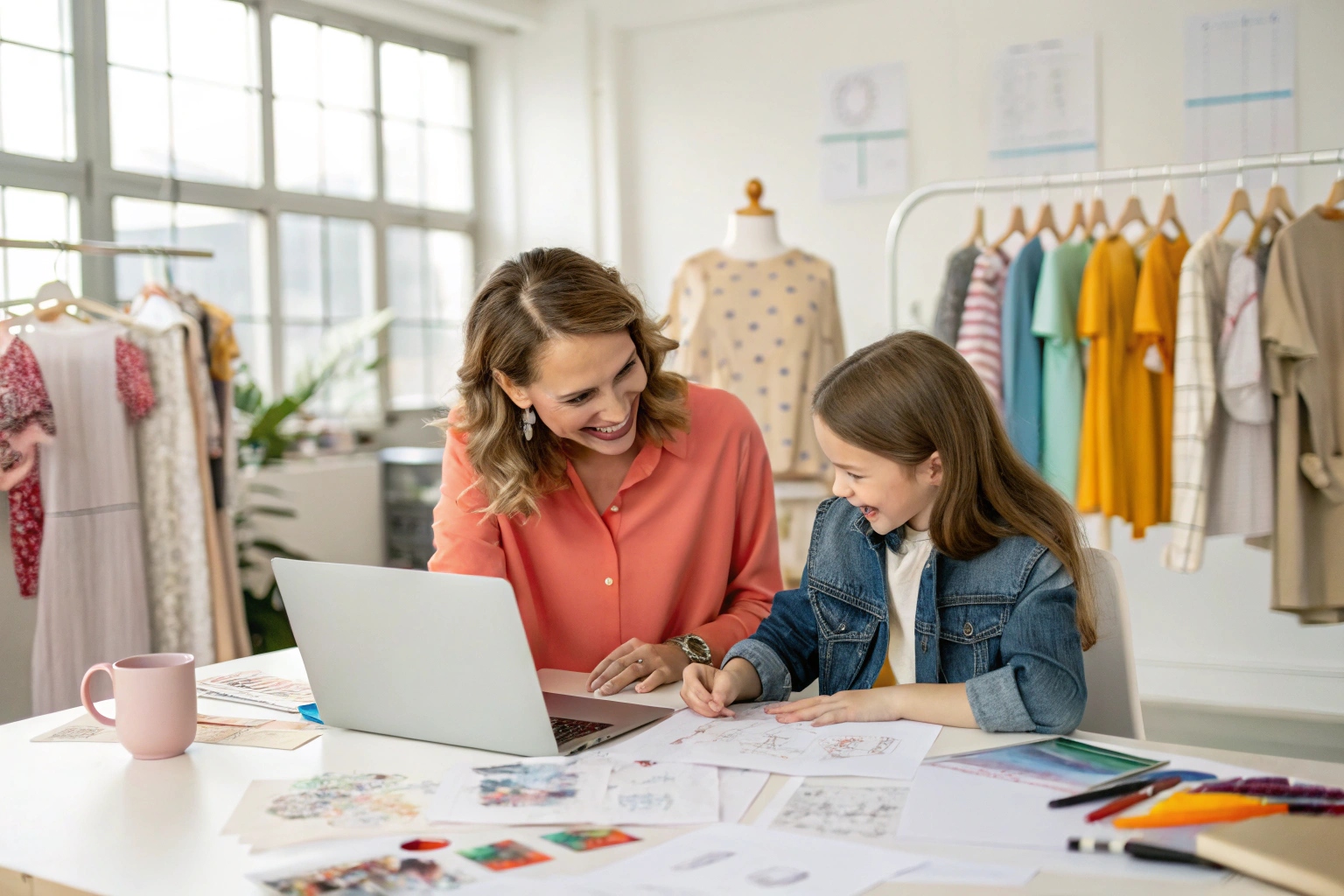Influencers are picky. They ignore most offers. But when it comes to capsule collections—especially in kidswear—they’re eager to say yes.
Influencers love collaborating on kidswear capsules because it allows them to co-create products, strengthen their brand, and offer something meaningful to their audience—all while gaining a new revenue stream.
If you're trying to grow a private label brand or launch a buzz-worthy product drop, working with the right influencer can take your capsule from unnoticed to unforgettable. Here’s how and why it works.
What are the benefits of collaborating with influencers?
Working with influencers isn't just about exposure anymore. It's about credibility, storytelling, and community.
Collaborating with influencers gives brands access to trusted audiences, more authentic content, and an emotional connection that traditional ads simply can’t replicate.

How does influencer collaboration build trust and accelerate audience engagement for kidswear brands?
When a parent influencer puts their name on a product, it’s personal. Their followers trust them. They've seen their family. They've heard their stories. That trust is what makes influencer capsules so effective. You’re not just selling a hoodie—you’re offering a piece of someone’s parenting style, values, or aesthetic.
At Fumao Clothing, we’ve helped several brands develop influencer capsules, and the engagement is always stronger. One collab we produced with a family-focused TikToker generated 50% higher conversions than the brand’s solo launch. Why? Because the influencer’s audience felt included in the process.
Why are influencers more willing to promote capsules they co-create?
Capsules give influencers skin in the game. When they help design, name, or even just curate the pieces, they feel ownership. That turns promotion into pride. Instead of a paid post they forget in two days, they share the capsule across platforms. They film behind-the-scenes videos. They show their kids wearing the product.
This creates longer, more organic exposure. And the influencer benefits too: it positions them as more than a content creator. Now they’re a designer, a tastemaker, a partner.
What clothing brands have the best collaborations?
Not all collabs work. The best ones share values, aesthetics, and customer overlap—especially in kidswear.
The most successful kidswear collabs come from brands that give influencers real creative input, keep capsules focused, and build stories that resonate with both fanbases.

Which brands are leading the way in influencer capsule strategy and what can we learn from them?
Take Rylee + Cru. Their artist-inspired kidswear capsules often involve mini collections created with parenting bloggers and illustrators. These collabs feel cohesive—limited pieces, clear visual stories, and coordinated drops. Parents respond because the line feels intentional, not mass-produced.
Another great example is Jamie Kay from New Zealand. Their influencer capsules sell out globally. Why? Because they allow collaborators to shape product direction—choosing colorways, prints, even launch copy. It creates buzz months before the actual release.
Brands that do well don’t just put an influencer’s name on a hangtag. They invite them into the process early. That’s the key.
How do smaller or startup brands create “big-brand” style collabs on a budget?
You don’t need millions to launch a strong influencer capsule. At Fumao Clothing, we work with small labels that succeed by keeping things simple. 3–5 core items. One theme. A few photos of the influencer’s child wearing the samples. That’s enough to create an emotional hook.
We help with packaging and tags, making sure the influencer feels featured and respected. Often, we also print short bios on hangtags or include thank-you cards signed by the collaborator. These low-cost extras boost the product’s perceived value and create a deeper emotional connection.
Capsule collabs are about meaning, not money.
How do influencers collab?
Influencer collaborations can range from simple shoutouts to full product development partnerships. In capsule strategy, the more creative control you give—the better the results.
Influencers collaborate best when they’re involved in concept development, design selection, marketing content, and post-launch storytelling.

What does a typical influencer capsule collaboration process look like for kidswear brands?
It usually starts with a conversation. The brand pitches a theme or idea. The influencer gives input—colors they love, messages they want to send, even their kids' favorite fits.
Next comes product planning. We often help create moodboards or sample mockups. Once the styles are approved, we handle sampling and shipping early pieces for social previews. During the pre-launch phase, the influencer starts teasing the drop.
Once it’s live, they push it hard: photos, videos, lives, and stories. The brand supports with paid ads and cross-posting. This creates a launch week full of energy. After that, the influencer might do follow-up content like “how I style the capsule” or “behind the scenes.”
How does capsule collaboration differ from traditional influencer marketing?
Traditional influencer marketing is transactional. You pay, they post. Then it’s over. A capsule collaboration, though, is relationship-based. Both sides win long term. The influencer deepens their brand identity. The clothing brand gets loyal new buyers.
It’s also more memorable. A capsule can turn into an annual tradition. We’ve seen some influencers return for second and third drops because the response was so strong. That consistency builds momentum.
And unlike one-off promotions, capsules create legacy content. Even a year later, customers search for that “Emma Rose x MiniLeaf” drop because they remember the name and the story behind it.
How to message influencers for collaboration?
Reaching out the wrong way kills deals before they start. Influencers get hundreds of DMs. If you want them to listen, your approach must feel tailored and thoughtful.
To message influencers effectively, keep your proposal specific, respectful, and aligned with their brand. Show clear value and invite creative input from the start.

What makes a strong first outreach message to a potential capsule collaborator?
Start with research. Mention something specific about the influencer’s content—like a reel about toddler clothes or a family trip photo. Then explain why you’re reaching out. Be clear that this isn’t a generic promo deal—it’s a co-creation opportunity.
Example:
Hi [Name], I’ve loved your posts on sensory-friendly kidswear and how you style your little one in soft textures. I run a custom kidswear brand called [Brand]. We’re planning a small winter capsule and think your voice would be perfect to help shape it. Would you be open to co-creating a mini line that reflects your taste and values?
This approach opens dialogue and shows respect. You’re offering a seat at the table—not a transaction.
How do you follow up professionally if they don’t respond right away?
Wait at least 5–7 days before following up. Keep it polite. Acknowledge they’re busy and reframe the value.
Example:
Hey [Name], just circling back on this in case my first note got buried. We’re still really excited about the idea of collaborating with you on a small capsule—it’s totally flexible and designed to reflect your voice. Let me know if it might be a good fit. No pressure, either way!
Short, friendly, and respectful. That tone keeps doors open—even if the timing isn’t right now, it might be later.
Conclusion
Influencers love kidswear capsule collaborations because they offer authenticity, creative ownership, and deep engagement with their audiences—far beyond a single post.










